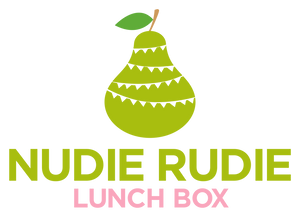· By Julia Boase
Why Stainless Steel is Better Choice for Kids
There have been rumblings of concern for a while now about the safety of plastics and food chemicals and many consumers would have no doubt noticed the trend towards “Bisphenol A (BPA)” free plastic products over the last few years.
The American Academy of Paediatrics (AAP) released their “Food Additives and Child Health” Policy Statement in 2018, which for the first time, makes recommendations about how we store and chose food products that we feed our family.
The AAP have classed food chemicals of concern as those either added directly to our food supply (specifically the preservatives nitrates/nitrites and some food colourings) or those which enter our food via indirect contact from packaging or the processing of food (BPA, phthalates, perfluroalkyls (PFCs), and perchlorates).
BPA (used to stiffen and harden plastic products) and phthalates (used in soft plastic products such as clear plastic food wrap) can both potentially interfere with the metabolism of carbohydrate and fat and have anti-androgenic (sex hormone) effects. There is therefore concern that both chemicals could have a role to play in obesity as well as reproductive development. PFCS and perchlorates can interfere with the production of thyroid hormones, and nitrate and nitrate preservatives have been linked to the production of cancer causing compounds. Some artificial food colourings have been linked to hyperactive and aggressive behaviour.
It’s important to note that much of the studies done to date are animal based studies or epidemiological studies which don’t necessarily point to a “cause and effect” in humans. Within the scientific community there is still a lot of contention as to how much of these chemicals humans are exposed to, and what level of exposure is harmful. In Australia our top food authority (Food Standards Australia New Zealand) feels that there is no evidence that BPA is harmful at levels our population is currently exposed to (you can ready more in the link below). Nonetheless, with children being exposed to proportionally more of these chemicals than adults, the AAP feels it's prudent to start reducing our exposure.
The AAP have made the following recommendations:
- Where possible choose fresh fruits and vegetables and wash those that cannot be peeled
- Avoid canned foods as these can be lined with BPA (note: there are some BPA free canned products in Australia)
- Avoid plastic storage containers in favour of glass or stainless steel
- Purchase PBA and phthalate free products
- Avoid clear plastic wraps (Phthalates) and baking paper (PFCS)
- Avoid Microwaving food and beverages (including breastmilk and formula) (heat causes the chemicals to leach out from plastic)
- Avoid putting plastic products in the dishwasher, hand wash them
- Limit or avoid processed meats (nitrate and nitrate preservatives are used in small goods such as ham and bacon)
- Limit processed foods
- Avoid artificial food colourings
Whilst there are certainly things we can do everyday at home to reduce our exposure to these chemicals, the reality is that it will take a “whole of food supply” approach to truly remove these chemicals from our environment.
In the meantime I’ve taken baby steps at home to start reducing my family’s exposure. For a while now I’ve been using glass storage containers in my pantry (there’s the added bonus that they look nice), and of course I use our stainless steel bento lunch boxes and drink bottles for my kids.
A bento style lunch box is really the best answer when it comes to reducing the need for using plastic cling wrap or wrappers in the lunch box. Annoyingly, many of the stainless steel lunch boxes on the market have not to date been leak proof, but we’ve solved that problem with our revolutionary removable silicone seal on the lid. It’s time to stop using juice and milk poppers at school as well. Our range of insulated stainless steel bottles will keep juice, milk or smoothies icy cold for the whole school day (just blend with ice when you make them in the morning), and of course you can use them for water too.
Of course I’m a realist and I completely realise that there will be days when you just need to reach for packet goods to fill up those lunch boxes (I have those days too). On balance, if I know I spend most of the week sending wrapper free lunches, then I feel that I’m doing my best for the health of my family and the environment. It’s all about baby steps and doing what you can, when you can.
If you’d like to read more about this topic head to:
http://pediatrics.aappublications.org/content/early/2018/07/19/peds.2018-1408
http://www.foodstandards.gov.au/consumer/chemicals/bpa/Pages/default.aspx
